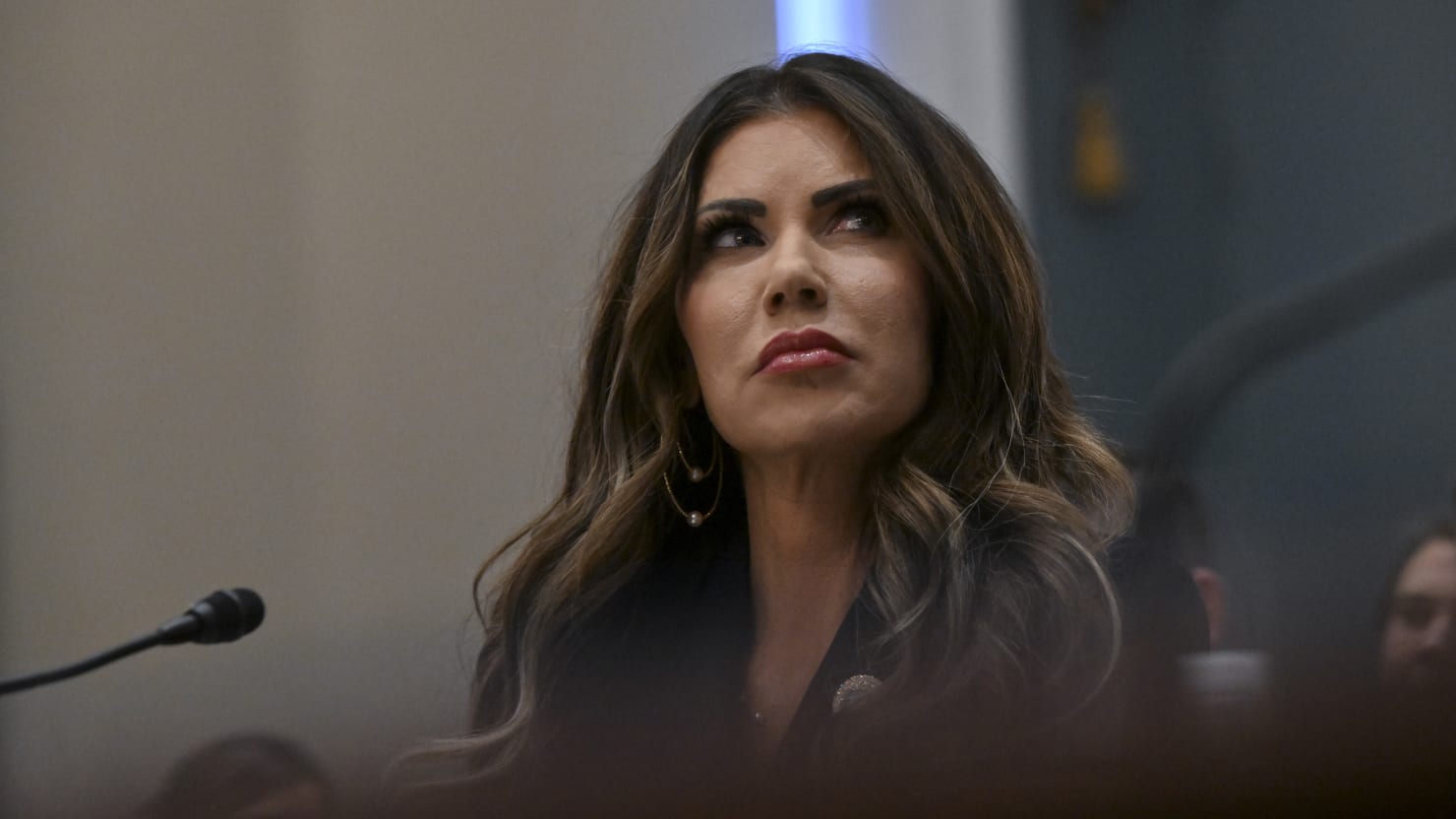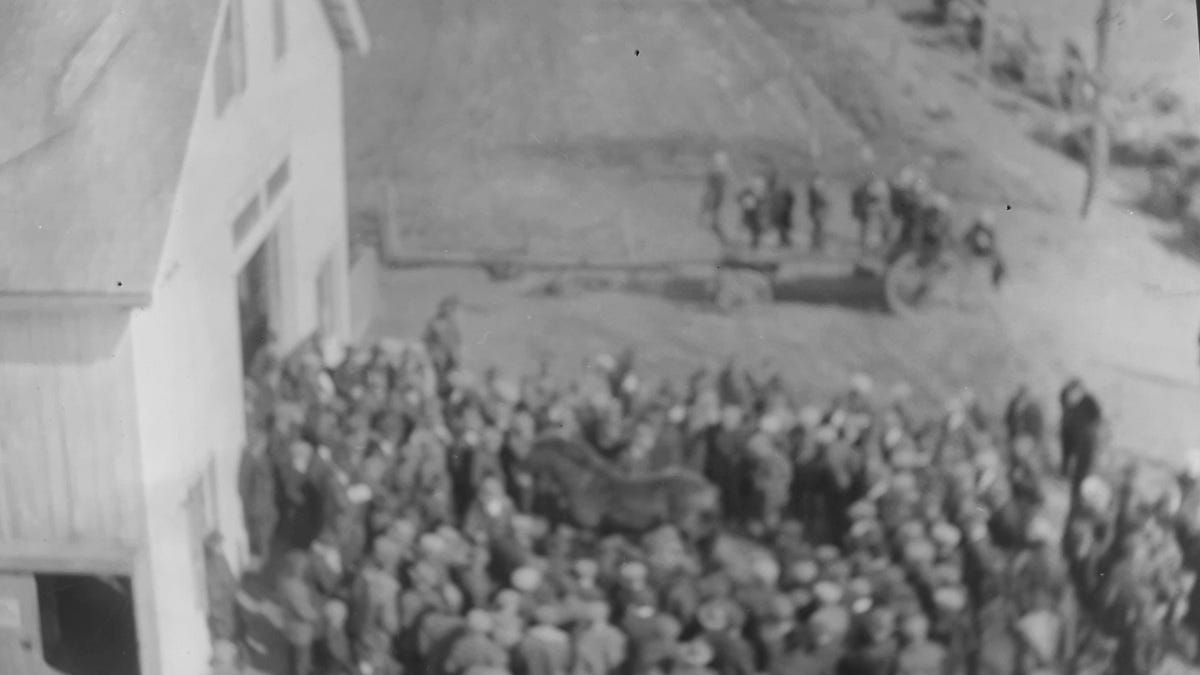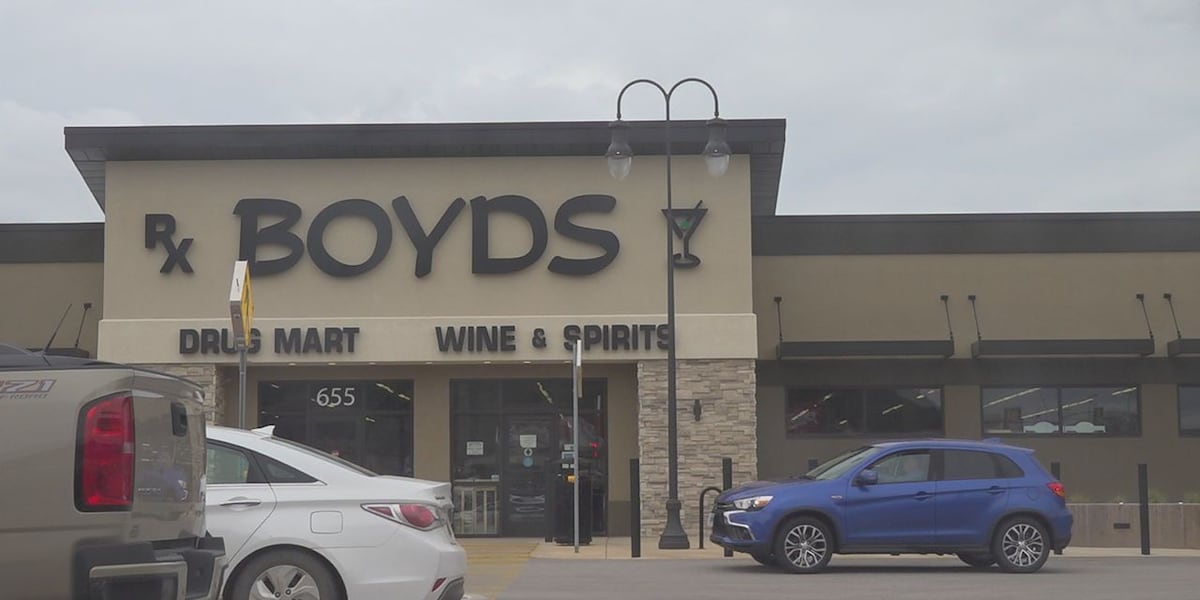South Dakota
South Dakota's largest solar farm to begin operation soon west of Rapid City

RAPID CITY, S.D. (KOTA) – South of New Underwood, South Dakota, you’ll find rolling hills covered with thousands of solar panels. This complex is Wild Springs Solar, and once it officially begins operations, it will be the state’s largest solar farm. Built by National Grid Renewables and providing most of the electricity it generates to Basin Electric Power Cooperative, Wild Springs Solar will be able to double the amount of solar energy collected in South Dakota. This renewable energy will power homes & businesses all over the country, but particularly in the Rapid City area and the Black Hills.
”A lot of the electricity coming from that, from the solar project, will be distributed to our consumer owners in the area,” said Lindsey Chumley, Basin Electric’s communications supervisor.
With Rapid City’s population growing quickly, an additional source of energy could prove to be useful. Wild Springs Solar will surely be hoping for sunny days ahead.
Copyright 2024 KOTA. All rights reserved.

South Dakota
South Dakota Animal Rescue: Sorry Kristi Noem, There Are No ‘Untrainable’ Dogs

An animal shelter in South Dakota is rebuffing the idea that there’s such a thing as an “untrainable” dog as Republican Gov. Kristi Noem defends a years-old decision to shoot her 14-month-old puppy over its poor behavior.
The governor was widely viewed as a frontrunner in Donald Trump’s vice presidential sweepstakes—until Friday, when The Guardian published excerpts from her forthcoming biography, including grisly details about killing animals on her farm, including the puppy, a female wirehaired pointer named Cricket.
In her book, Noem reportedly writes that Cricket was “untrainable,” “aggressive,” and “less than worthless” as a hunting dog. She recalls dragging Cricket to a gravel pit and shooting her in front of a stricken construction crew after becoming fed up with the dog, who had ruined a hunting trip, killed chickens, and bit her.
Paws Animal Rescue, a shelter based in the capital city of Pierre, said in a Facebook post on Saturday that it had been “flooded with messages” regarding Noem’s anecdote. Though it declined to comment on the governor’s situation, the rescue said its team felt compelled to say something about “untrainable dogs” more generally.
“We haven’t met one yet,” the shelter said. “In all our years in animal rescue and the thousands of animals that have come through our door, we have yet to meet a dog that was so untrainable it deserved to be shot to death.”
The organization said that its volunteer-run team had encountered all kinds of dogs exhibiting problematic behavior, and in every instance worked to “teach them manners” and find them the right homes.
“Is euthanasia sometimes necessary? In certain situations, yes,” the rescue said. “When an animal is so sick that [its] quality of life is inhumane, then humane euthanasia may be the answer. When an animal has been so badly damaged by people or circumstances that it has demons it cannot overcome, sometimes maybe then too.
“When a 14-month-old puppy (who was almost certainly bought from a breeder at 8 weeks and had every opportunity to be taught the right way to behave), absolutely not,” it added.
After it was made public, Noem’s anecdote about Cricket sparked outrage and widespread criticism online, with users questioning why she hadn’t returned the dog to its breeder or surrendered it to a shelter. The Guardian, which obtained a copy of Noem’s book, did not specify if she names Cricket’s breeder in it, and their identity remained unclear on Sunday. But there are more than 60 animal shelters and welfare organizations in South Dakota, according to nonprofit tracker Cause IQ.
Paws Animal Rescue did not immediately return a request for further comment on Sunday night. Their post included a link for donations that would be set aside “specifically for the training and rehabilitation of dogs that come into our care that are ‘untrainable.’”
Noem, 52, on Sunday doubled down on the decision to kill Cricket. Though she said she understood why “some people” might have been “upset” by the anecdote, the governor tweeted that she was “being a responsible parent, dog owner, and neighbor.”
She continued, “The fact is, South Dakota law states that dogs who attack and kill livestock can be put down. Given that Cricket had shown aggressive behavior toward people by biting them, I decided what I did.”
South Dakota
Contents of memorial to mountain man Hugh Glass revealed at Neihardt event • South Dakota Searchlight

WAYNE, Nebraska — A “reveal” of what a Nebraska poet hid inside a lonely monument a century ago revealed more of what Mother Nature could wreck over the span of 100 years.
On Saturday, descendants of John Neihardt revealed what they’d found inside an “altar to courage” that the poet and members of a fan club from what’s now Wayne State College planted in the rocky soil of northwestern South Dakota in 1923.
The homemade, concrete monument memorialized the courage of mountain man Hugh Glass, who was left for dead in August 1823 after being mauled by a grizzly bear but then crawled and limped 200 miles to get help.
Neihardt challenged students from Wayne State (then Nebraska Normal College) to return in 100 years to rededicate and open a time capsule he buried within the monument, which he said contained an “original manuscript.”
Drilled, chiseled into monument
His family carefully drilled and chiseled into the thigh-high monument last October after removing it from its location near Lemmon, South Dakota, where Glass was mauled.
But on Saturday they revealed that what they could retrieve from inside were still-wet fragments of a special Neihardt edition of a student newspaper, The Goldenrod, as well as pieces of Neihardt’s book containing his epic poem describing the heroic crawl, “The Song of Hugh Glass.”
Coralie Hughes, a granddaughter of Neihardt, said that despite the lack of a new work from Nebraska’s “poet laureate in perpetuity,” the family had accomplished its goal of fulfilling the “challenge” to open up the time capsule and not destroying the monument in the process.
“I was hoping for a personal note to the world from my grandfather,” Hughes said. “Maybe he did (leave one) because a lot of what we found was unintelligible.”
The paper fragments, when found inside a tin box imbedded in the concrete, were still wet, which she said may have been the result of several times when the monument was flooded.
The monument was originally built on dry, private ranch land near the confluence of two forks of the Grand River, but it ended up on the banks of a federal reservoir that flooded at least four times since 1953.
Hughes said the family was told by the U.S. Bureau of Reclamation, which owns the reservoir, that the monument had to be moved if it was to be breached.
She said the family proceeded gingerly in drilling into the monument so as not to destroy it. The first thing to be discovered— using a snake-like video camera — were fragments of a pop bottle that contained a letter from two newlyweds— J.T. and Myrtle Young of Lincoln — who arrived too late to sign a document Neihardt said was signed by those present and placed inside a tin box.
The Neihardt family decided against trying to retrieve the glass fragments or trying to dig out all the paper fragments inside the embedded tin box for fear of destroying the monument, which was relocated to the John Neihardt State Historic Site in Bancroft, Nebraska.
Some papers remain inside the tin box, Hughes said, but they are just “crumbling” pieces.
“We didn’t want to keep going,” said Alexis Petri of Kansas City, who produced a short documentary on the family’s work to retrieve the monument.
Her documentary and the “reveal” were presented Saturday at the annual spring conference of the Neihardt Foundation held at Wayne State College. Neihardt graduated from the school, then called Nebraska Normal College, at age 15.
‘Wonderful to see something tangible’
The event focused on the saga of the almost forgotten monument, the taking up of the challenge by Wayne State professor Joseph Weixelman and his class to rededicate the monument and the eventual decision to relocate the monument to Nebraska.
Mary McDermott, who drove from Holdrege with her daughter to view the final chapter in the mystery of the monument, betrayed no disappointment that some rare manuscript wasn’t found.
“It’s wonderful to see something tangible from 100 years ago,” she said.
“I’m impressed that there was something still there,” said her daughter Alizabeth.
Marianne Reynolds, the executive director of the Neihardt Center, said the fragments retrieved would be sent to the Ford Conservation Center in Omaha for further analysis.
After that, she said, they would be put on display at the center in Bancroft. A kiosk is envisioned so that visitors can play the documentary produced by Petri, Reynolds added.
South Dakota
Three counties will vote on banning ballot tabulator machines, requiring hand-counting • South Dakota Searchlight

Three South Dakota counties will ask voters during the June 4 primary if they should ban the use of tabulator machines in future local elections.
If the measures pass, the auditor’s offices in each county would have to hand-count ballots in the Nov. 5 general election and thereafter. The votes – in Gregory, Haakon and Tripp counties – were forced by citizen-initiated petitions at the county level.
Petitioners say they want to ban tabulators because they’re concerned about election security and integrity.
State law allows citizens to petition their local governments to put a proposed law to a public vote. The petitions require signatures from 5% of registered voters in a jurisdiction.
The auditors in each county are now working to educate their citizens on the election process, including the accuracy and safety of tabulators, and highlighting the potential financial consequences of hand-counting ballots.
“More than anything, I want my county to be educated about how our elections run,” said Stacy Pinney, Haakon County auditor.
Similar petitions are circulating in 35 counties, according to South Dakota Canvassing, the nonprofit that helped organize the statewide effort. Petitions have been rejected in counties including Lawrence and McPherson, where some county officials cited legal problems with the petition language. Meanwhile, Fall River County is the only county in South Dakota that will hand-count ballots during the primary election.
In Haakon County, Pinney plans to hold three town halls ahead of the June 4 primary to answer county residents’ questions. The final town hall will coincide with her statutorily required public test of the tabulator machines. She’ll also present to the local high school’s senior government class about the election process.
Push for election hand counts spreads despite rejection in Lawrence County
Pinney said many county residents don’t know there’s a resolution board that handles votes cast aside by a tabulator when those votes need further study for voter intent. She added that some people aren’t aware they can ask for a new ballot if they make a mistake.
In Haakon County, the cost of the general election without hand-counting will already be about $10,000 to $15,000, Pinney said.
If the ballot initiative passes, Pinney expects she’ll need 10 extra people to hand-count ballots. That can cost anywhere from $5,000 to $10,000 more, she estimates.
Julie Bartling, Gregory County auditor, said if her county’s tabulator ban passes, she’ll have to break up the south-central county’s three precincts into six or 10 precincts to have manageable ballot amounts for hand counters.
That will cost the county $5,000 to $8,000 more – assuming she can convince poll workers who’ve already been working 12-hour days to stay longer and hand-count ballots.
“A lot of people think hand-counting is cheaper, but it really isn’t,” Bartling said.
Bartling said some people think different ballots can be used, but, by law, the county has to use the same ballot whether it hand-counts or uses machines. For Gregory, the tabulator machines cost less than $2,000 each election to use, Bartling said.

Tripp County Auditor Barb DeSersa said she’ll have to find another 65 people to hand-count ballots if the measure passes. DeSersa oversaw Tripp County’s 2022 general election hand-counting effort, when it was the only county in South Dakota to hand-count all its ballots.
DeSersa was awake for 40 hours straight between Election Day and the day after in 2022, with a significant amount of that time supervising volunteers hand-counting ballots. Several races had to be recounted by volunteer counting boards – sometimes three or four times that night.
If the ban passes, she won’t have poll workers hand-count, and she’ll have five hand-count volunteers per precinct rather than three. The extra two will be “onlookers to ensure everything is done correctly,” DeSersa said.
Tripp and Gregory counties will each conduct a post-election audit of all cast ballots after the primary, rather than the state-required 5% audit.
“I’m anxious for the post-election audit because I want people to know that their automated counting machines are accurate,” Bartling said. “They’re counting correctly and the post-election audit will show that and prove it.”
GET THE MORNING HEADLINES DELIVERED TO YOUR INBOX
-

 Kentucky1 week ago
Kentucky1 week agoKentucky first lady visits Fort Knox schools in honor of Month of the Military Child
-

 World1 week ago
World1 week agoShipping firms plead for UN help amid escalating Middle East conflict
-

 Politics1 week ago
Politics1 week agoICE chief says this foreign adversary isn’t taking back its illegal immigrants
-

 News1 week ago
News1 week agoIs this fictitious civil war closer to reality than we think? : Consider This from NPR
-

 News1 week ago
News1 week agoThe San Francisco Zoo will receive a pair of pandas from China
-

 Politics1 week ago
Politics1 week ago'Nothing more backwards' than US funding Ukraine border security but not our own, conservatives say
-

 World1 week ago
World1 week agoTwo Mexican mayoral contenders found dead on same day
-

 Politics1 week ago
Politics1 week agoRepublican aims to break decades long Senate election losing streak in this blue state















